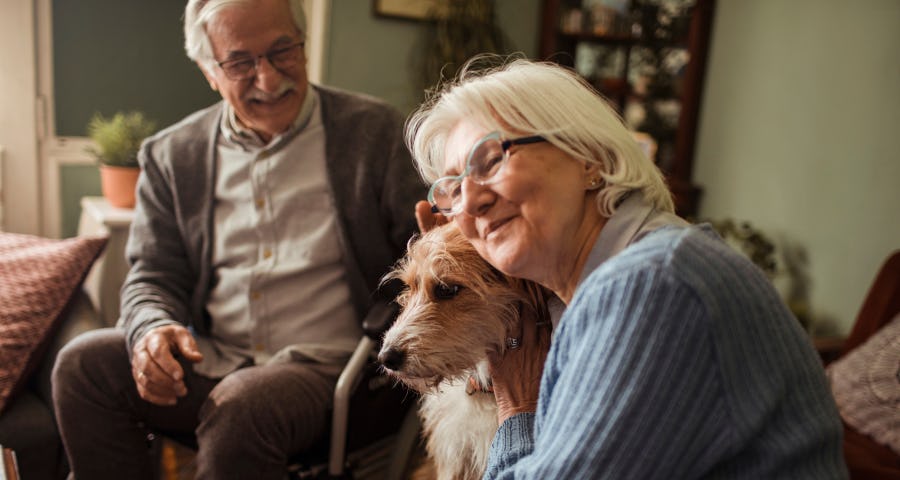If you share your home with a senior dog, you already know the routine: the slower walks, the longer naps, the gray muzzle that makes your heart melt. What you might not realize is that — just like people — a dog’s golden years often come with rising costs.
From vet visits and medications to mobility aids and comfort upgrades around the house, caring for an older pet can be more expensive than caring for a younger one.
Here’s what drives those expenses, why it’s worth every penny, and how smart financial tools, like a home equity line of credit (HELOC), can help you plan for your dog’s comfort without straining your budget.
Veterinary care: More visits, more tests
As dogs age, preventive care becomes essential.
Routine exams: Basic check-ups cost around $50 to $100 per visit.
More comprehensive visits: Those with screenings, diagnostics, X-rays, and more tests average around $214 per visit.
Most vets recommend two checkups per year for older dogs. When you pair that with the likely need screenings, tests, and diagnostics, estimates for annual preventive care can run into hundreds to over a thousand dollars depending on location and any conditions your dog may have.
Tip: Investing in preventive screenings early often reduces emergency costs later.
Specialized diets and supplements
Senior dogs thrive on higher-quality nutrition, which often means prescription or senior-specific food. While a standard diet for a medium dog can cost $800 to $2,400 per year (or $2.40 to $6.50 per day), prescription or senior-specific dog food can be more expensive.
Joint and omega supplements that help keep dogs moving well range from $20 to $60 per month.
Tip: Ask your vet about senior formulas designed to support joint health and digestion. Even small changes can make a big difference.
Dental care and preventive maintenance
Dental disease is one of the most common (and costly) health issues in older dogs. Regular cleanings, which can help prevent expensive surgeries and serious infections, range from $300 to $2,000. But if extractions, root canals, or specialist work are needed, add on $150 to $3,000 (or more).
Mobility and comfort upgrades
As dogs slow down, simple changes at home can make life easier and safer.
Orthopedic bed: $100 to $300
Ramps or stairs: $50 to $300
Nonslip rugs or mats: $20 to $100
Heated bedding or hydrotherapy sessions: $50 to $75 per session
These upgrades may not be “medical,” but they dramatically improve quality of life for older pets and peace of mind for owners.
Insurance, emergencies, and end-of-life care
Pet insurance: Premiums rise with age, often $70 to $150 per month for senior dogs
Palliative or hospice care, euthanasia, and cremation services: $200 to $500+
No one likes to think about these costs, but planning ahead helps you focus on what matters most when the time comes: comfort and companionship.
Investing in our elder pets’ happiness
They’ve given us years of loyalty, laughter, and love. Providing the best care in their later years is a way to return that devotion.
And for many homeowners, it’s also about creating a pet-friendly home that evolves with their dog’s needs. From slip-resistant flooring to easy-access yards and shaded resting spots, there are a handful of impactful updates pet owners can make.
Funding pet care and home upgrades with a Figure HELOC
Whether it’s veterinary bills, home adaptations, or other major pet expenses, a Figure home equity line of credit (HELOC) can help you use your home equity to cover surgeries, yard remodels, and home improvements that make living easier for your senior dog — without touching your savings.
Yes, caring for a senior dog costs more — but the comfort, companionship, and peace of mind are priceless. And with smart financial tools like a Figure HELOC, you can give them the care they deserve while keeping your household finances steady.
